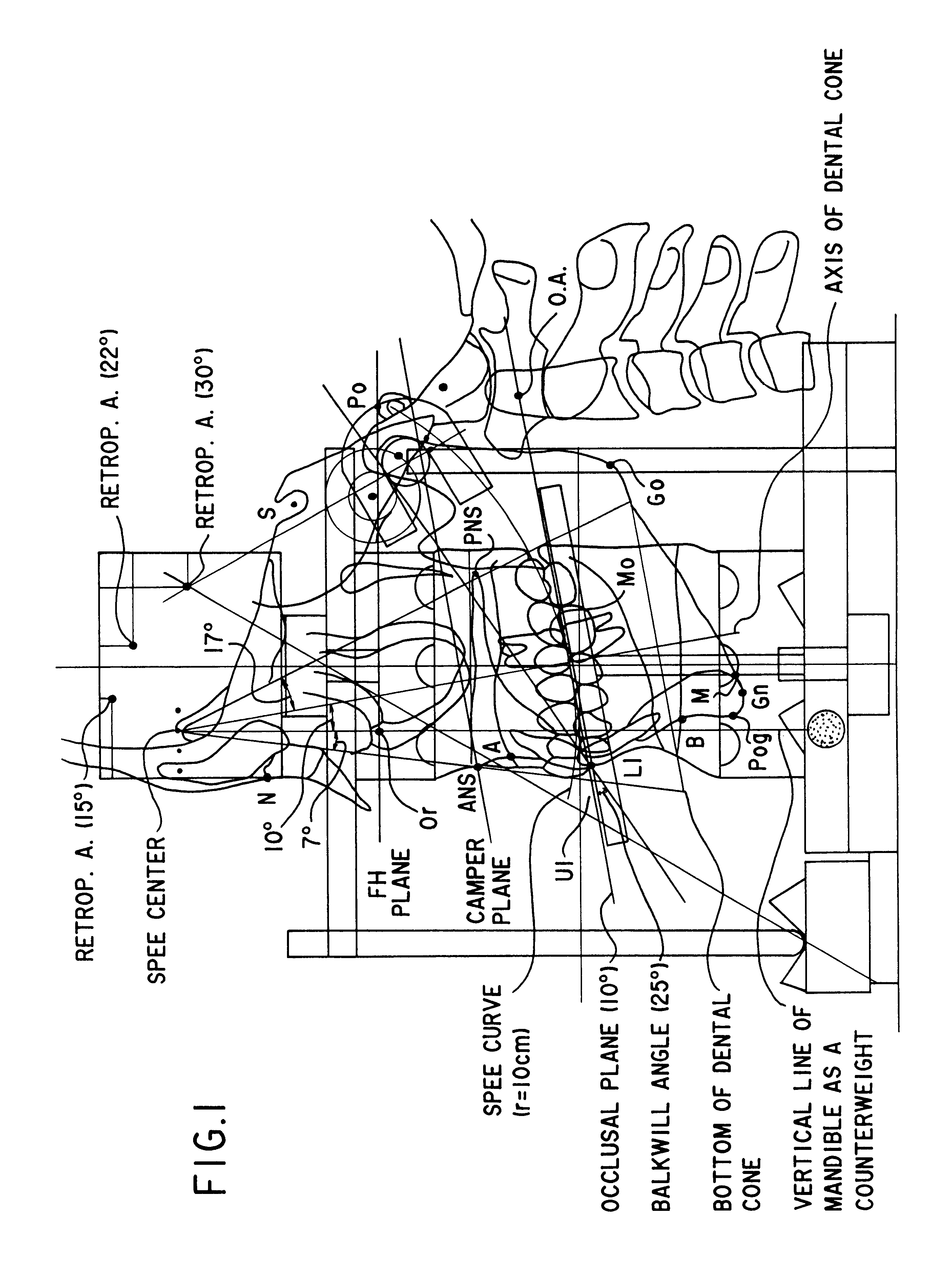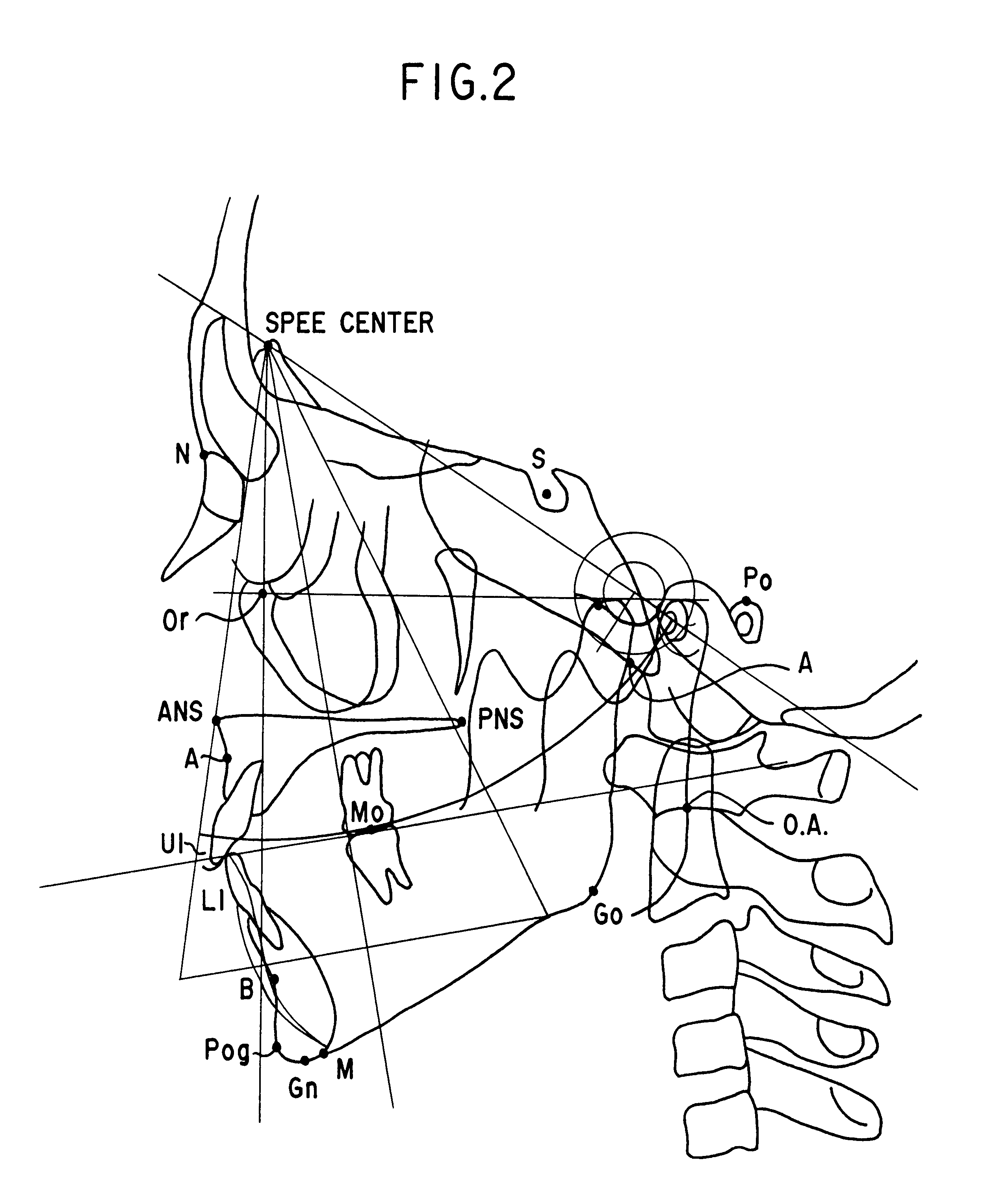Dental articulator and its transform plate
a technology of articulator and transform plate, which is applied in the field of dental articulator and its transform plate, can solve the problems of incompatibility of right and left spee curves, incongruity of horizontal and vertical directions, and inconvenient us
- Summary
- Abstract
- Description
- Claims
- Application Information
AI Technical Summary
Problems solved by technology
Method used
Image
Examples
Embodiment Construction
Referring to the attached drawings, the present invention will hereafter be described in detail.
Firstly, the "relationship between an articulator and a person" and the "survey on jaw movement in terms of geometric and anatomical viewpoint", based on a new guiding principle, will be summarized.
"The Relationship Between an Articulator and a Person"
FIG. 1 shows a relationship between a person (shown in cephalo) and a dental articulator (hereafter referred to as an articulator). The articulator's upper jaw frame and FH plane (Or-Po) are parallel and this relationship is basic throughout the discussion. According to cephalo-analysis, the angle between the occlusal plane (U1-Mo) and the FH plane is about 10 degrees, the Balkwill angle (an angle formed between the occlusal plane and an imaginary line drawn from the center of the condyle's upper surface to the incisor point) is about 25 degrees, the Camper plane (naso-auditory meatus line, prosthetics plane) and occlusal plane are nearly pa...
PUM
 Login to View More
Login to View More Abstract
Description
Claims
Application Information
 Login to View More
Login to View More - R&D
- Intellectual Property
- Life Sciences
- Materials
- Tech Scout
- Unparalleled Data Quality
- Higher Quality Content
- 60% Fewer Hallucinations
Browse by: Latest US Patents, China's latest patents, Technical Efficacy Thesaurus, Application Domain, Technology Topic, Popular Technical Reports.
© 2025 PatSnap. All rights reserved.Legal|Privacy policy|Modern Slavery Act Transparency Statement|Sitemap|About US| Contact US: help@patsnap.com



